As Italy slows into its August rhythm, travellers often head to the coast or major cities. Yet, tucked into the hills of the Marche region, Palazzo Lenci Barchi offers an alternative Ferragosto escape. Here, Renaissance architecture and contemporary art meet. This month, visitors can step inside the partially restored 16th-century palazzo to experience Le città di Calvino. The exhibition fills raw plaster walls, ancient beams, and newly revived stonework.
It’s a chance to see restoration in progress. This is as much about community revival as it is about the building itself.
Barchi: A Renaissance “Ideal City”
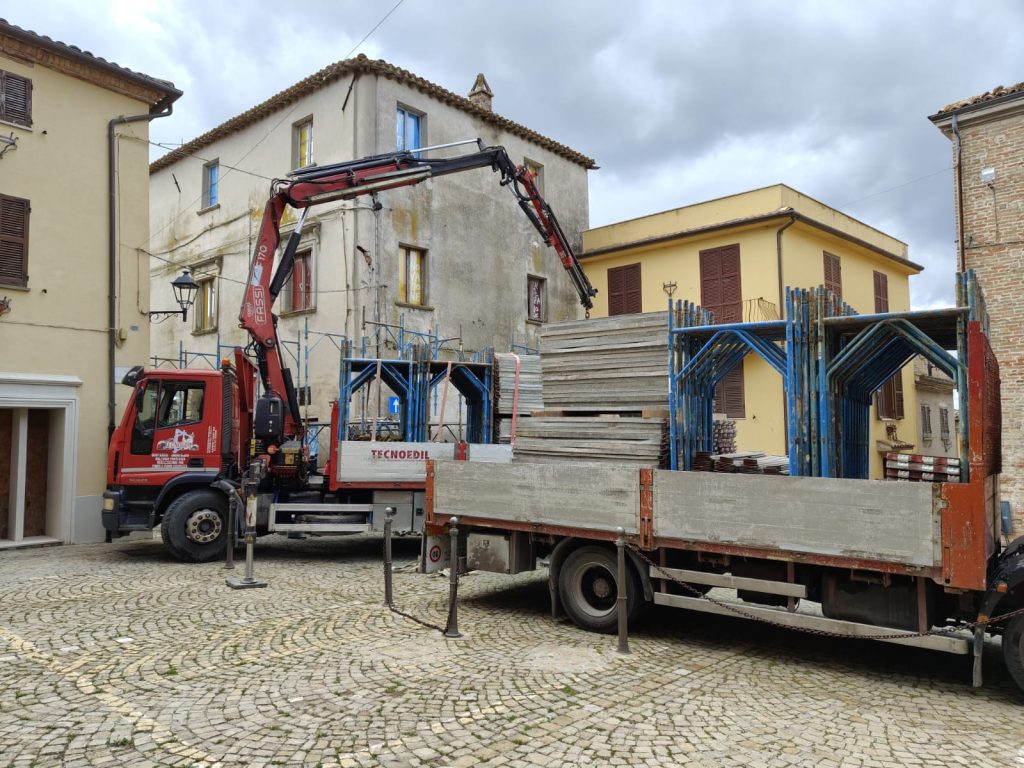
Barchi is a small hamlet in Pesaro-Urbino, part of Terre Roveresche. With fewer than a thousand residents, it still holds great architectural significance. In the late 1500s, Marquis Pietro Bonarelli della Rovere commissioned Portuguese-born architect Filippo Terzi to design a “Città Ideale.” The plan followed the golden ratio, creating balanced streets, harmonious perspectives, and spaces shaped for human life.
Over time, the town’s population declined. Its grand buildings fell silent. Today, the restoration of Palazzo Lenci is helping bring Barchi back to life.
The Vision for Palazzo Lenci
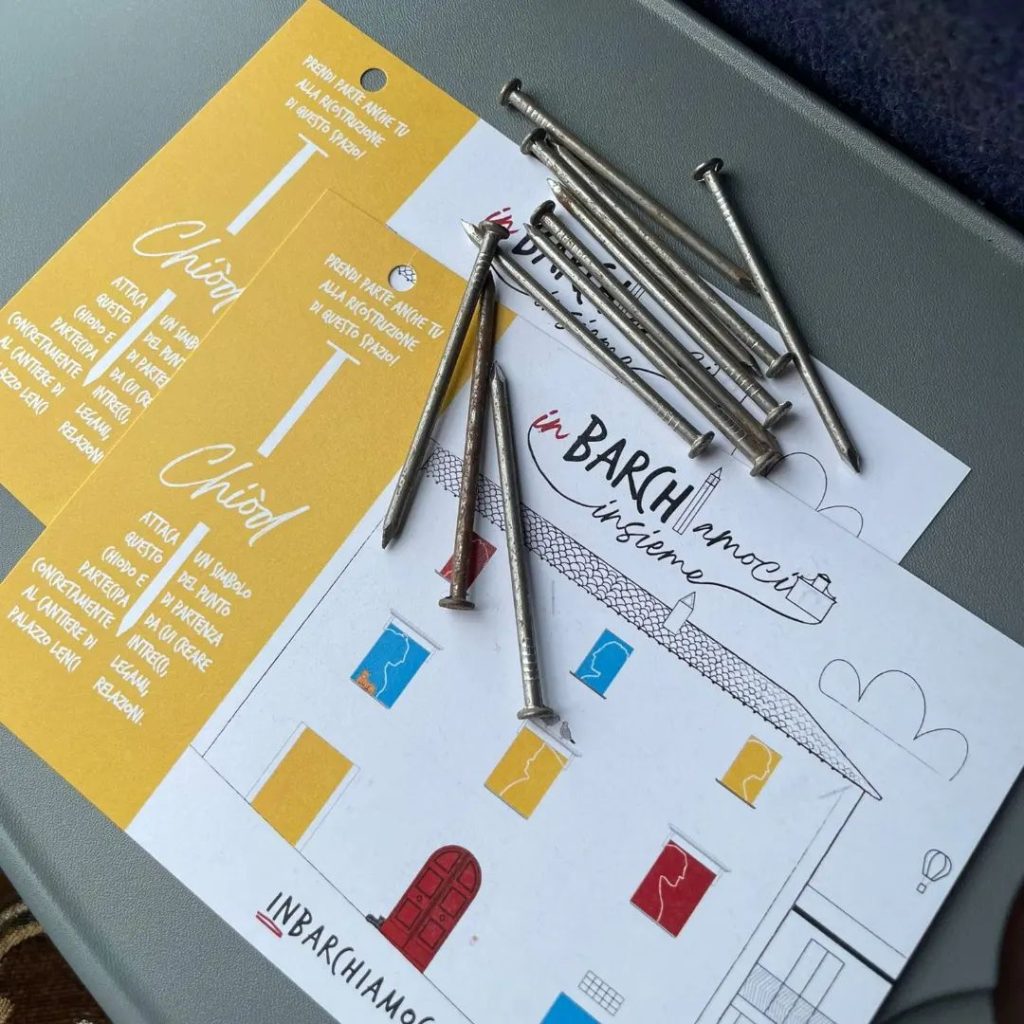
The initiative comes from 593Studio, a Treviso-based firm known for participatory design and heritage restoration. Earlier this year, they purchased Palazzo Lenci. Their goal is to create a cultural hub for artisans, exhibitions, and slow tourism.
The first symbolic act was reopening Vicolo degli Ebrei. This narrow passage links the garden to Corso Umberto. The change reconnects the building with the town, both physically and symbolically.
Online, the project’s website, inbarchiamoci.it, offers a 3D reconstruction of Barchi. Created with laser scanning and drones, it’s the first high-detail digital map of the town.
Participatory Restoration
From the start, the restoration invited public input. Residents shared ideas via boards, online submissions, and workshops. The project’s conceptual map is shaped by six words: ecosystem, innovation, identity, stories, participation, and people.
Local associations and businesses have joined the effort. Students from the Istituto Filippin in Paderno del Grappa have documented details, imagined new uses, and created panels explaining the project.
“This is not only architecture, but a continuous narrative, a discovery that opens to the community,” says 593Studio founder Michele Sbrissa. It’s a sentiment that aligns perfectly with Live in Italy Magazine’s sustainable travel values—heritage that lives, breathes, and adapts through active use.
Highlights of the First Phase
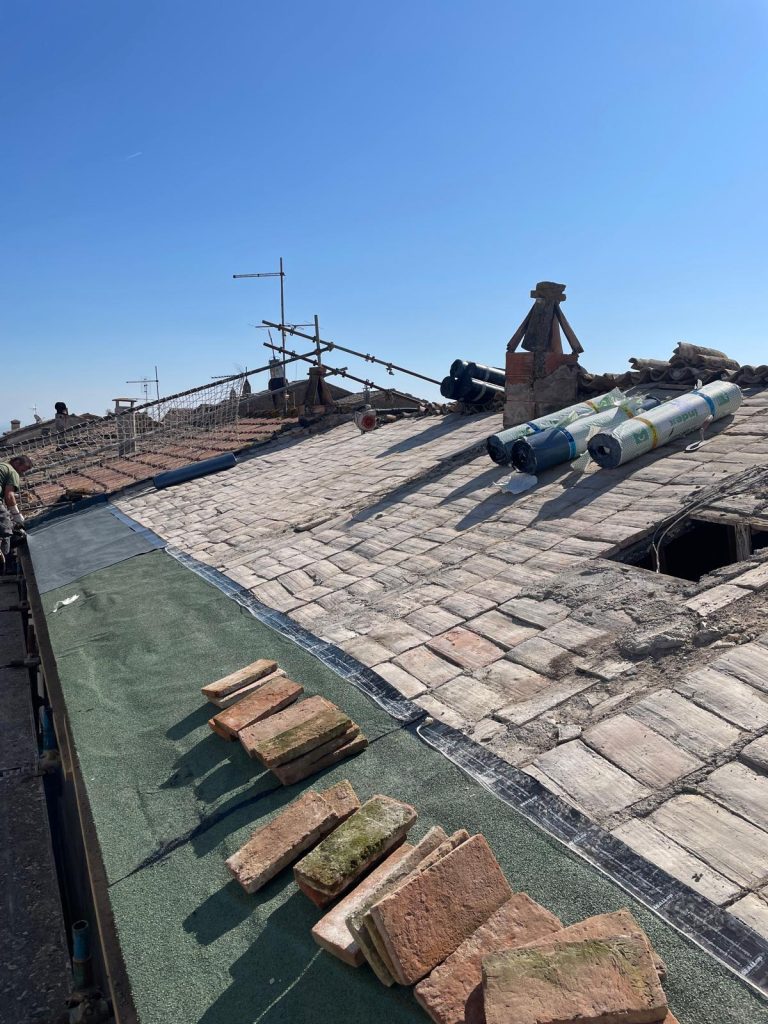
The initial work focused on exterior and structural repairs:
- Cleaning façades and restoring stone elements
- Repairing the roof while preserving the 16th-century roofline
- Restoring four historic chimneys for possible use
- Recovering fragments of original Galleria flooring
- Landscaping the garden and reopening it to Vicolo degli Ebrei
- Adding façade anchors for future art installations
Inside, hidden staircases, bricked-up doorways, timber beams, and faded floral motifs emerged. These finds confirm the palazzo’s layered history.
Art in Dialogue with Architecture
To mark this milestone, Palazzo Lenci is hosting Le città di Calvino from August 3 to 30. The exhibition is part of Borghi Invisibili, a project connecting art, participation, and imagination across Terre Roveresche and San Costanzo.
Inspired by Italo Calvino’s Invisible Cities, the show presents about 40 works from the Accademia di Belle Arti di Palermo and ELMAD Auguste Renoir in Paris. Illustrations, graphic novels, and installations occupy unfinished rooms, speaking directly to exposed beams, stone portals, and centuries-old textures.
Here, the building is not a backdrop—it’s a partner in the art. The dialogue between contemporary work and historic space invites visitors to move between eras in a single visit.
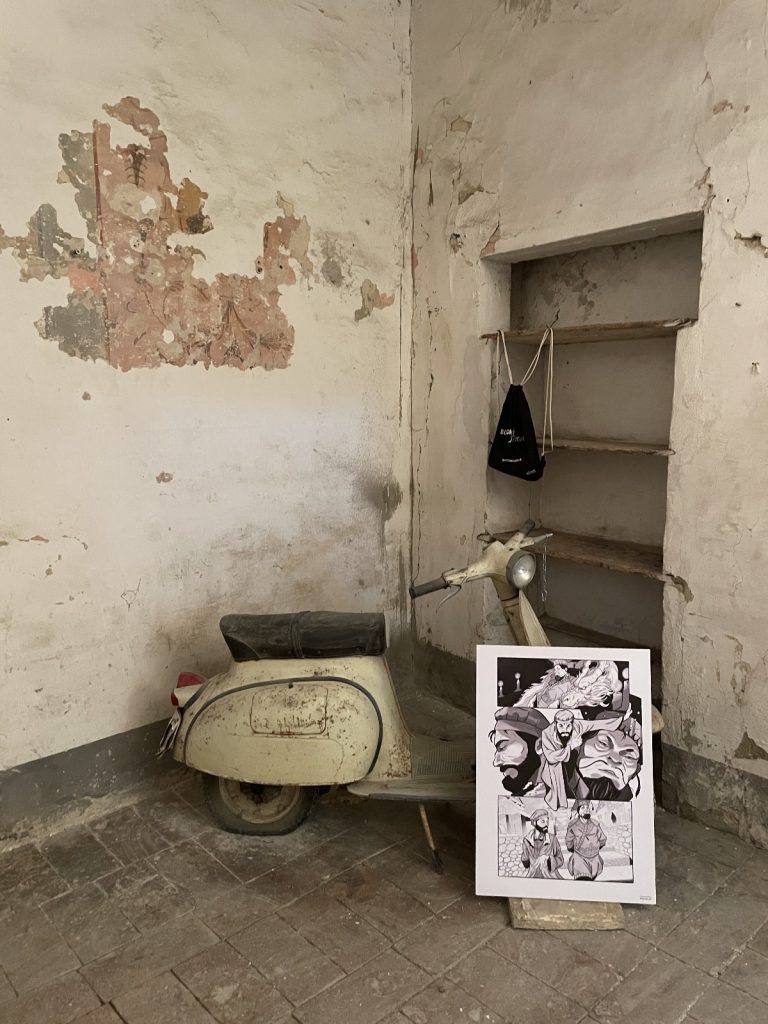
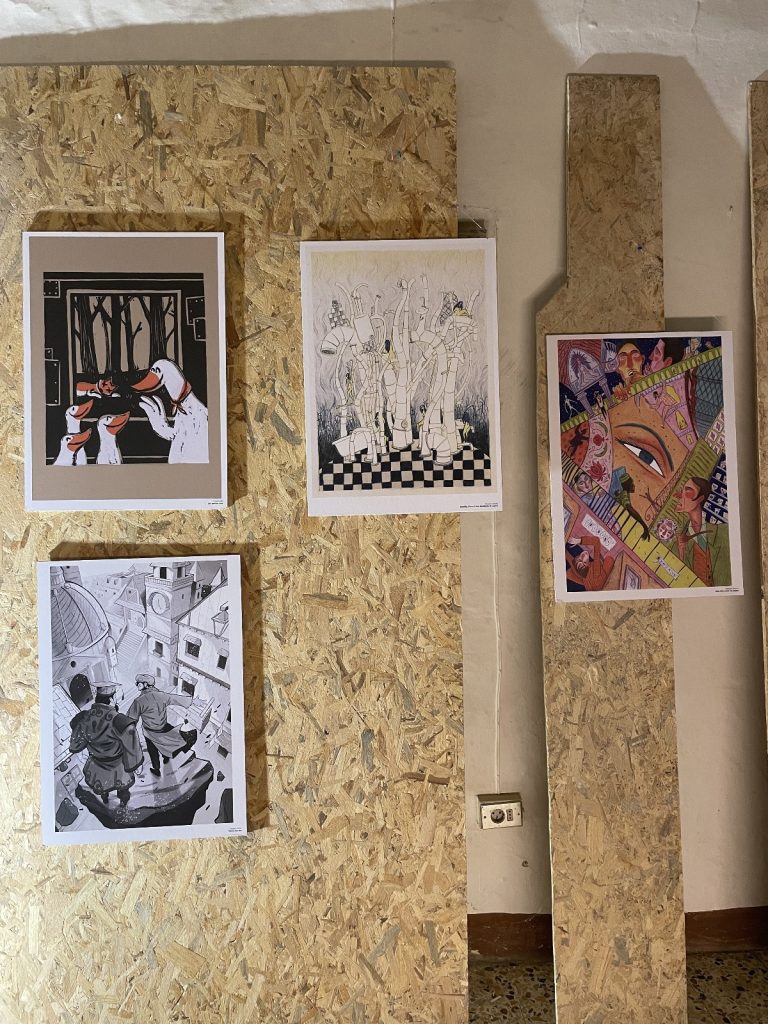


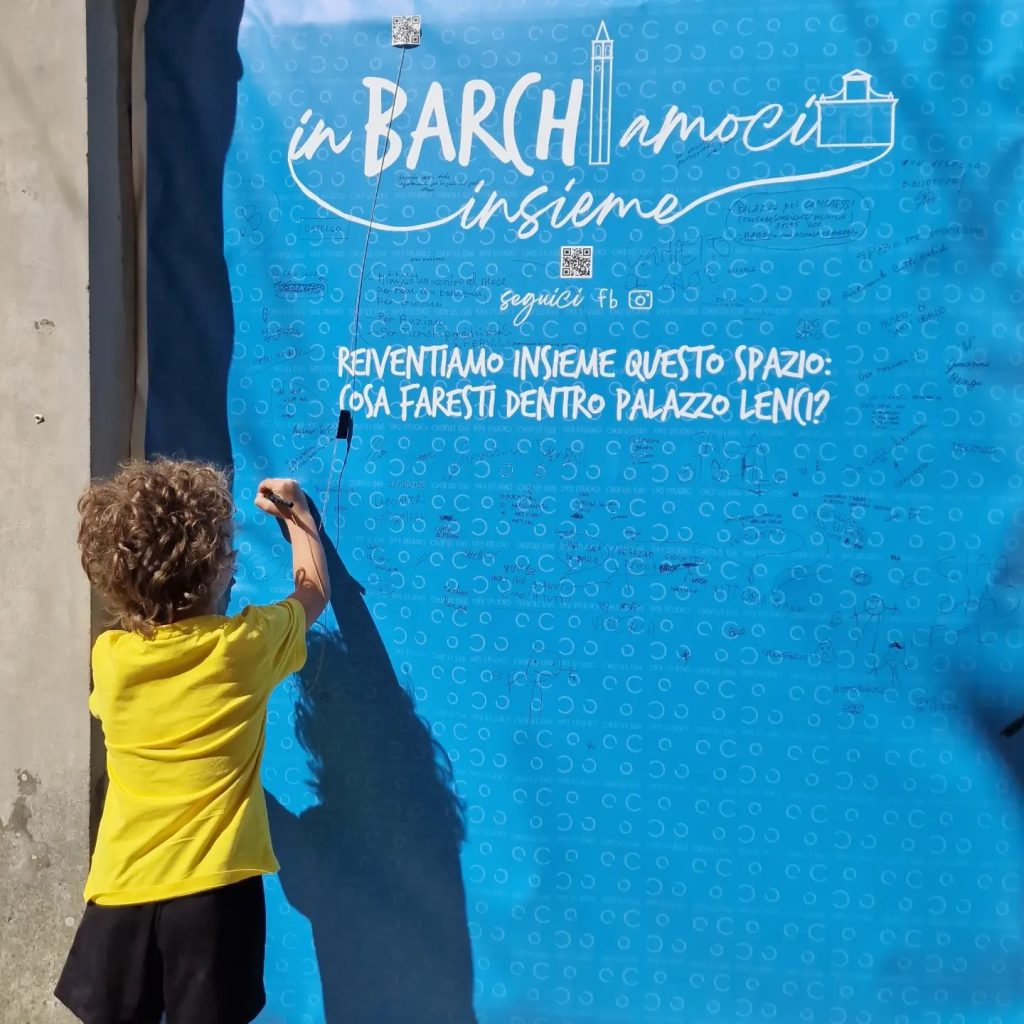
Participating Artists
From Palermo: Alessio Agosta, Federica Arrampatore, Marta Baglieri, Greta Calandrino, Noemi Carollo, Claudia Di Miceli, Chloé Desoubrie, Roberta Ferrigno, Riccardo Galantino, Emanuela Galioto, Claudia Galluzzo, Chloé Gillet, Antonino Graziano, Grabiel Kraft, Louisa Masselis, Roberto Palmeri, Roberto Rizzo, Andrea San Brunone, Saku Santeri Heinonen, Giorgio Vaccaro, Rebecca Verduci, and Maria Francesca Villari.
Faculty contributors: Renato Galasso, Emanuele Gizzi, and Leandra La Rosa.
Local collaboration comes from the Compagnia delle Catenelle, an artistic collective in Barchi known for creative use of public spaces.
A Community Effort
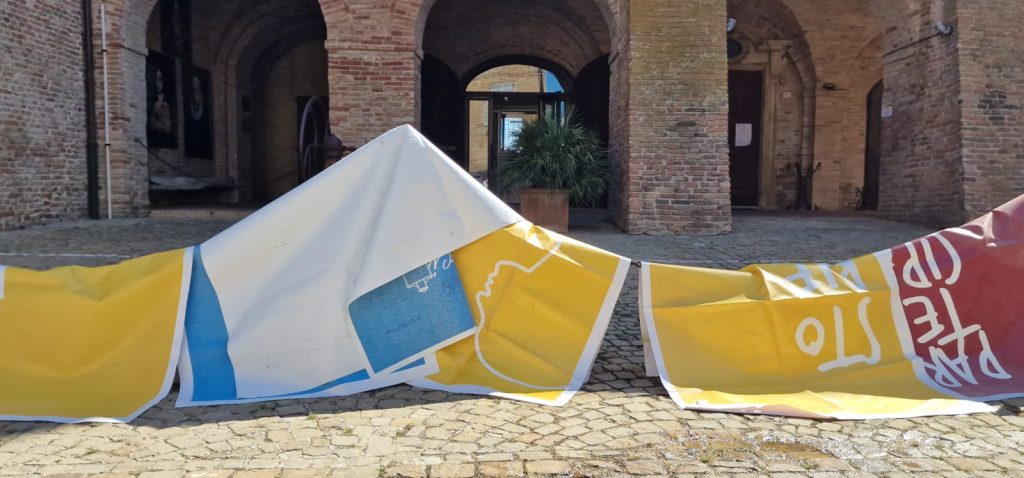
Volunteers and local businesses have played an essential role. They contributed materials, lighting, and technical solutions. This support deepens the project’s roots in the local economy.
Students prepared much of the exhibition while learning how cultural spaces can strengthen communities. Next year, six Lasallian high schools from across Italy will take part in school-to-work programs at the palazzo.
Beyond the Summer
The exhibition offers a preview of Palazzo Lenci’s potential. Restoration will resume in autumn, guided by community feedback.
The long-term vision includes artisan workshops, exhibitions, cultural programs, and small-scale hospitality. All will respect the building’s history while supporting local identity.
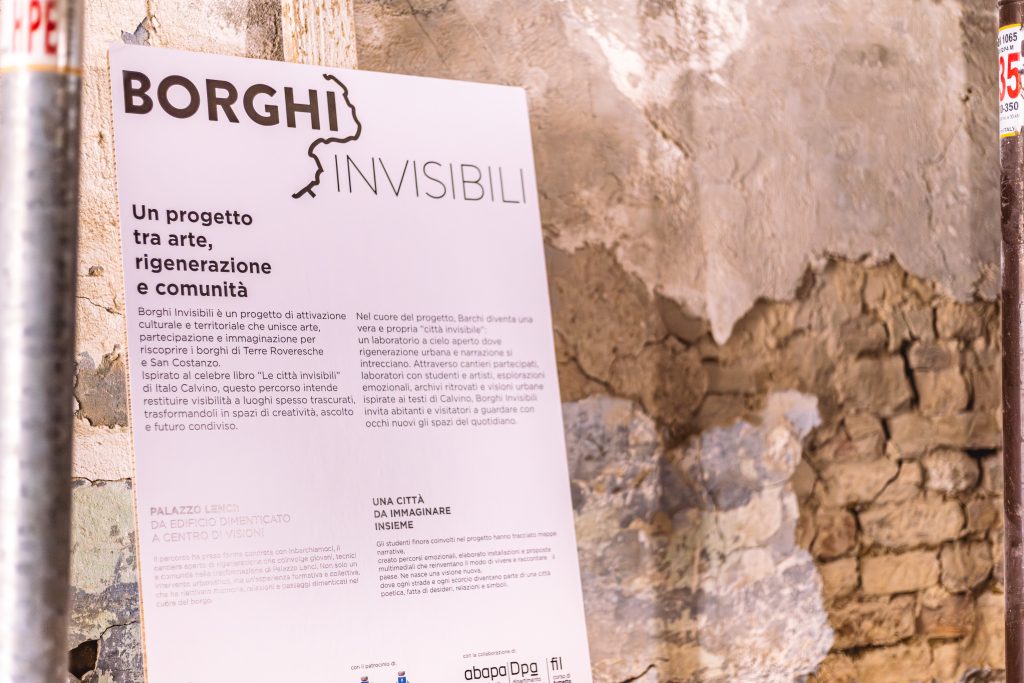
Stepping into a Living Renaissance
In August, when Italy’s cities and coastlines are most crowded, Palazzo Lenci Barchi offers a quieter invitation. Here, heritage meets imagination, restoration meets creativity, and a small community welcomes the world. It’s an approach that resonates deeply with Live in Italy Magazine’s sustainable travel values—heritage that lives, breathes, and adapts through active use.
For late-summer travellers, it’s a rare chance to leave the crowded piazzas and step into a living history. Visiting supports small-town growth, local businesses, and the people preserving Barchi’s story.
Palazzo Lenci’s chapter this summer unfolds with Le città di Calvino, open until 30 August. The project will continue to grow, offering future visitors a lasting dialogue between past and present, stone and story.
Visiting Palazzo Lenci
Exhibition: Le città di Calvino, through 30 August
Opening hours: Monday, Friday, and Saturday, 20:00–22:00
Admission: Free
Websites: inbarchiamoci.it | borghinvisibili.it
Getting there:
Barchi is about three hours from Rome by car and under two hours from Ancona. The nearest train stations are in Fano and Pesaro, with bus links to Terre Roveresche. The town is also close to Urbino, the Adriatic coast, and other hilltop villages in Marche.



What a fantastic project. Slow art slow skill endurable art endurable passion. Congratulations Michele! The Marche of Progress.
Thank you James for reading this article. We are looking forward to seeing the progress!